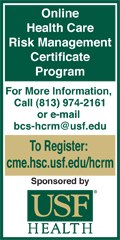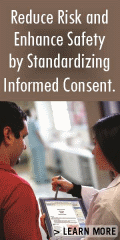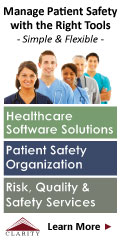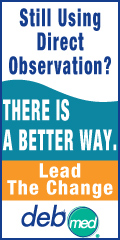 |
 |
 |

January / February 2008

Editor's Notebook
The Blogosphere
By Susan Carr
As this issue of PSQH goes to press, healthcare bloggers are buzzing about a federal agency that recently shut down a prominent quality improvement program. I've been following the discussion because it involves important issues for readers of this magazine, and because it's a great display of the vitality of the healthcare blogosphere.
The buzz began on December 30 when The New York Times published an op-ed column by Atul Gawande, a surgeon at Brigham and Women's Hospital in Boston, author of Complications and Better, and a staff writer for The New Yorker. In "A Lifesaving Checklist," Gawande reported that the federal Office for Human Research Protections (OHRP) had shut down a quality improvement program in Michigan because researchers did not have written permission from the patients and clinicians involved. According to Gawande,
Scientific research regulations had previously exempted efforts to improve medical quality and public health — because they hadn't been scientific. Now that the work is becoming more systematic (and effective), the authorities have stepped in.
That news triggered strong protest in part because the shuttered program was spectacularly successful and widely known. Gawande himself had described it in The New Yorker just 3 weeks before his op-ed in the Times: In 2001, Dr. Peter Pronovost reduced central-line infections from 11% to zero for a 12-month period at Johns Hopkins Hospital by instituting a 5-step checklist. In 2003, the Michigan Health and Hospital Association invited Pronovost to launch checklist programs (and gather data and report results) in virtually all ICUs in Michigan. After the first 3 months, infection rates fell 66%. Many hospitals reduced their rates to zero. Similar programs were to follow — and are now on hold — in Rhode Island and New Jersey.
Bloggers reacted with disbelief and outrage to Gawande's report of the OHRP's action. Bob Wachter — national leader in patient safety and quality improvement, chief of hospital medicine at UCSF, and author of Internal Bleeding — has expressed frustration in his blog, Wachter's World (www.the-hospitalist.org/blogs). In his January 16 posting, "Did I Violate Federal Regulations Today? (I Hope So)," Wachter mentions others who have blogged about the OHRP, including Paul Levy (www.runningahospital.blogspot.com), Charlie Baker (www.letstalkhealthcare.org), Jim Sabin (healthcareorganizationalethics.blogspot.com), and Maggie Mahar, whose postings I tend to read on Matthew Holt's blog, www.thehealthcareblog.com. In a posting on January 14, Levy suggested to HHS Secretary Michael Leavitt that he use his own blog (secretarysblog.hhs.gov) to comment. Secretary Levitt has been posting from India, where he is discussing import safety and emergency preparedness (pandemics, HIV/AIDS), and has not yet commented about the OHRP.
The Internet is transforming the way we stay in touch with friends, search for new jobs, learn about our medical conditions, purchase airline tickets, balance our checkbooks, etc. Also transformative is the way blogs are enabling rich discussions that include leaders in healthcare but are not exclusive to the powerful. The discussions are transparent, open, and refreshing. Take a look and join in!
|
 |
 |
 |


















|
 |



